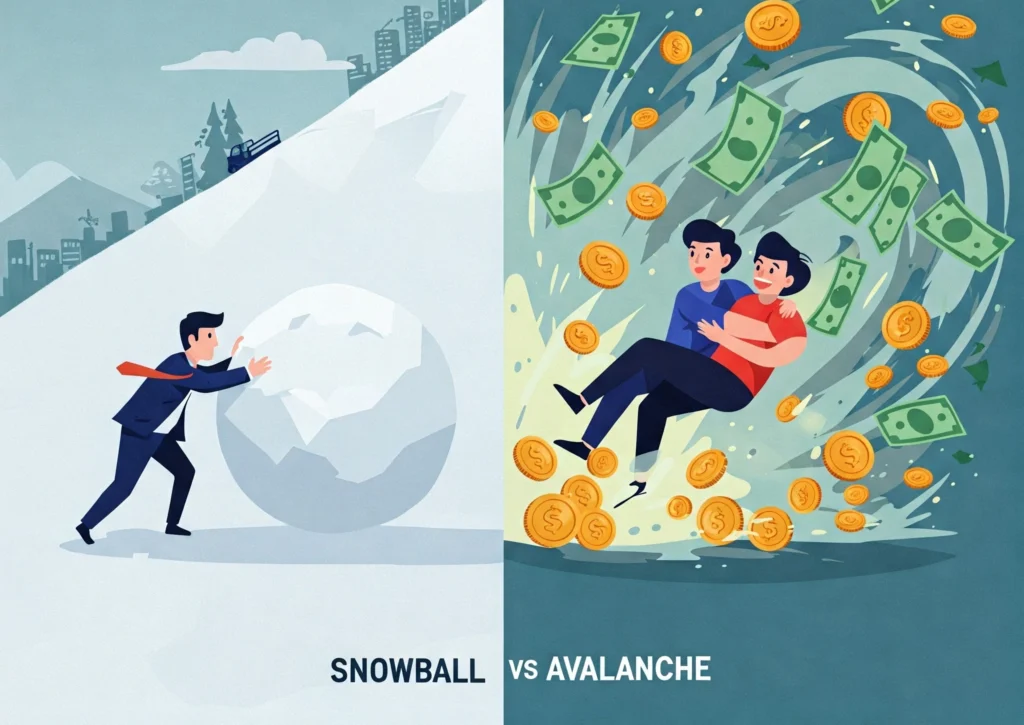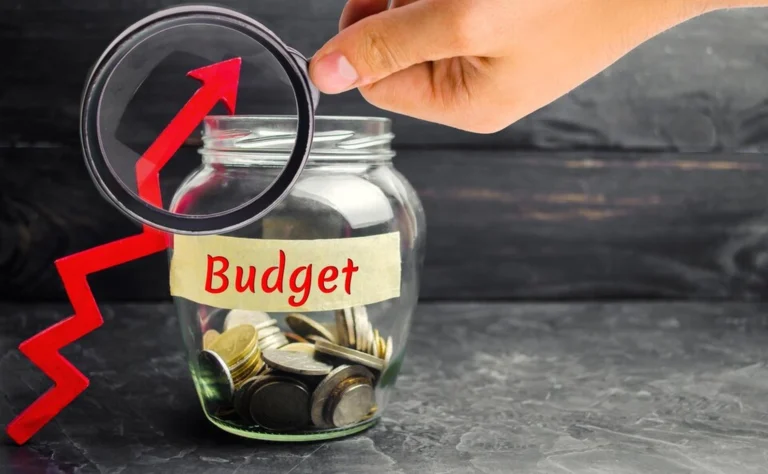Snowball vs Avalanche: Best Strategy to Pay Off Debt and Build Wealth Faster

Debt can feel like a heavy backpack you carry every day—draining your energy, your peace of mind, and your financial freedom. But luckily, it doesn’t have to be permanent. Just like climbing a mountain or tackling a fitness goal, paying off debt becomes much more doable when you follow a solid plan. That’s where the Snowball and Avalanche methods come in.
In this post, we’ll break down these two popular debt repayment strategies in simple terms, explore their pros and cons, and help you figure out which one can help you pay off debt faster and start building wealth sooner.
Why Having a Debt Repayment Strategy Matters
Let’s face it—debt doesn’t only cost money. It adds stress, delays your goals, and limits your financial freedom. Whether it’s credit card debt, student loans, or car payments, tackling debt head-on can make a huge difference in your life.
But randomly paying off your debts without a strategy is like driving without GPS. Sure, you might reach your destination eventually—but it’ll take longer, and you might burn more gas (aka money!) along the way. A solid plan helps you stay focused, motivated, and efficient.
Understanding the Snowball Method
The Debt Snowball Method is all about winning small victories first to stay motivated. You start by paying off your smallest debts first, regardless of interest rates. Here’s how it works:
- List all your debts from smallest balance to largest.
- Make minimum payments on all debts except the smallest one.
- Throw every extra dollar you have at the smallest debt until it’s gone.
- Once that debt is paid off, roll that payment into the next smallest debt. Rinse and repeat!
Think of it like rolling a snowball down a hill. It starts small but builds momentum as it picks up snow—just like your motivation builds as you eliminate debt after debt.
Pros of the Snowball Method:
- Motivation boost: You see quick wins which keeps you committed.
- Simple and easy to follow: No need to analyze interest rates.
- Helps build financial habits: Great for those just starting out with money management.
Cons of the Snowball Method:
- You may end up paying more in interest if your biggest debts have the highest rates.
Example: Let’s say you have three debts: a $500 credit card, a $1,200 personal loan, and a $5,000 car loan. Using the Snowball Method, you’d focus on the $500 credit card first, even if it has a lower interest rate. The idea is to build momentum—as soon as it’s paid off, you feel accomplished and energized to keep going.
What is the Avalanche Method?
The Avalanche Method is about saving the most money by tackling the highest interest rate debts first. Think of it like strategically melting the mountain of debt from the top down.
- List your debts by interest rate, from highest to lowest.
- Pay minimums on all debts, but put your extra money toward the one with the highest interest.
- Once that’s gone, move on to the next highest interest rate debt.
It’s a more cost-effective way to pay off debt—but it might not offer quick wins if high-interest debts also have large balances.
Pros of the Avalanche Method:
- Saves you more in interest over time: You minimize the total amount you pay.
- Faster overall debt repayment: Assuming you stay motivated, you’ll be debt-free sooner.
Cons of the Avalanche Method:
- Slower results at first: It could take a while before you see a debt fully paid off.
- Can be harder to stay motivated: Especially if your highest-interest debt is your largest.
Example: Let’s say your $5,000 car loan is at 5% interest, but your $1,200 personal loan is at 10%. Even though the car loan is bigger, you’d focus on the personal loan first with the Avalanche Method, because it’s costing you more in interest.
Which Strategy Is Better: Snowball or Avalanche?
Here’s the truth—there’s no one-size-fits-all answer. The best strategy is the one you’ll actually stick to consistently.
Ask yourself:
- Do you need quick wins to stay motivated? Try the Snowball Method.
- Are you numbers-driven and focused on saving money? Go with the Avalanche Method.
In fact, some people blend the two. They might start with a small debt to get a win, then switch to the Avalanche approach to save more in the long haul. The goal is to pay down debt fast while keeping up your motivation.
Paying Off Debt Is Just the Beginning
Once you’re out of debt—or even during your journey—don’t forget about the bigger goal: building wealth.
Here’s how to move from managing debt into building a strong financial future:
- Create (and stick to) a budget: Know where your money’s going every month.
- Build an emergency fund: Aim for 3–6 months of expenses to avoid future debt.
- Invest early: Even small amounts can grow over time thanks to compound interest.
- Retirement savings: Open an IRA or contribute to a 401(k), especially if your employer matches.
The habits you build to pay off debt—like budgeting, avoiding unnecessary spending, and tracking goals—are the same ones that help you build lasting wealth.
Final Thoughts
Paying off debt isn’t just about numbers on a page—it’s about freedom. Whether you choose the Snowball or Avalanche method, what matters most is taking that first step and staying consistent.
If you’re feeling overwhelmed, remember you’re not alone. Thousands of people have faced the same mountain—and conquered it. Whether you need the emotional boost from small wins or you’re laser-focused on saving money, there’s a path forward.
So, which one feels right for you? Take a moment, choose your strategy, and get started. Your future self will thank you!
Want more personal finance tips? Subscribe to our newsletter or check out related posts on US Finance Blog for more ways to boost your financial health.





